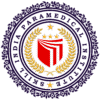X-Ray Technician Course: A Comprehensive Guide

1. What is an X-Ray Technician Course?
The X-Ray Technician Course is a diploma or certificate program designed to provide students with the knowledge and practical skills required to operate X-ray equipment safely and effectively. The course covers anatomy, physiology, radiographic imaging techniques, patient care, radiation safety, and equipment handling.Upon completing the course, students are qualified to work as X-ray technicians in hospitals, diagnostic labs, and healthcare facilities, assisting radiologists and other medical professionals in producing high-quality diagnostic images.2. Duration of the X-Ray Technician Course
The duration of the X-Ray Technician course depends on the type of program chosen:- Certificate Courses: These are usually 6 months to 1 year in duration.
- Diploma Courses: Typically last for 1 to 2 years and provide a more in-depth understanding of radiology.
- Degree Courses: A Bachelor’s Degree in Radiology and Imaging Technology takes about 3 to 4 years and covers a broader range of topics, including advanced imaging techniques like CT scans and MRIs.
3. Eligibility Criteria
The eligibility for an X-ray technician course may vary depending on the institution and the type of course (certificate, diploma, or degree). However, the general requirements include:- Educational Qualification: Candidates must have completed 10+2 with a background in science (Physics, Chemistry, and Biology/Mathematics) from a recognized board.
- Minimum Marks: Most institutions require a minimum of 50% marks in 10+2 for eligibility.
- Age Limit: Some institutions may set a minimum age limit, generally 17 years or above, at the time of admission.
4. Subjects and Curriculum
The X-ray technician course covers both theoretical and practical components, focusing on producing high-quality diagnostic images and ensuring patient safety. Key subjects include:- Anatomy and Physiology: Understanding the structure and function of the human body.
- Radiographic Physics: The physics behind X-rays and how they interact with the human body.
- Radiographic Techniques: How to position patients and set up equipment to obtain clear, accurate images.
- Radiation Protection: Techniques to protect both the patient and the technician from excessive radiation exposure.
- Patient Care: Proper methods of patient preparation, positioning, and care during imaging procedures.
- Medical Imaging: Basic principles of other imaging modalities like CT, MRI, and ultrasound.
- Pathology: Understanding the various diseases and conditions that can be diagnosed using radiography.
5. Career Opportunities for X-Ray Technicians
After completing the X-Ray Technician course, graduates can pursue a range of career opportunities in both the public and private healthcare sectors. Some common job roles include:- X-Ray Technician: Operating X-ray machines, preparing patients, and producing diagnostic images.
- Radiology Technician: Working in radiology departments to assist with other imaging procedures like CT scans and MRIs.
- Medical Imaging Technician: Specializing in various imaging techniques, including X-rays, ultrasound, and fluoroscopy.
- Diagnostic Medical Sonographer: Involved in ultrasound imaging, often specializing in areas like obstetrics or cardiology.
- CT Scan Technician: Specializing in producing detailed images using computerized tomography (CT).
- MRI Technician: Using magnetic resonance imaging (MRI) technology to produce detailed images of the internal body.
- Hospitals
- Diagnostic Centers
- Private Clinics
- Nursing Homes
- Research Institutions
- Mobile Imaging Services
6. Skills Acquired During the X-Ray Technician Course
During the course, students acquire several key skills, including:- Technical Proficiency: How to operate X-ray machines and other diagnostic imaging equipment.
- Patient Care: Communicating with patients, positioning them correctly, and ensuring their comfort during the procedure.
- Attention to Detail: Producing high-quality diagnostic images requires a keen eye and precision in machine setup and patient positioning.
- Radiation Safety: Protecting patients, themselves, and other healthcare staff from unnecessary radiation exposure.
- Medical Knowledge: Understanding anatomy and pathology to assist in accurate diagnoses.
- Critical Thinking: Being able to recognize potential issues in imaging results and communicating effectively with radiologists.
7. Importance of Radiation Safety
Radiation safety is one of the most critical aspects of the X-Ray Technician course. Exposure to X-rays can be harmful if not properly controlled. Therefore, the course emphasizes:- Proper Use of Protective Gear: Lead aprons, shields, and other protective equipment.
- Monitoring Radiation Levels: Ensuring that radiation doses are within safe limits for both patients and healthcare workers.
- Patient Safety: Minimizing patient exposure to radiation by using the lowest effective dose and shielding non-target body parts.
8. Scope for Higher Studies After X-Ray Technician Course
After completing a diploma or certificate course in X-ray technology, students can pursue higher education to advance their careers. Some popular options include:- Bachelor’s Degree in Radiology and Imaging Technology: A comprehensive course covering advanced diagnostic techniques, including CT, MRI, and other imaging methods.
- Postgraduate Diploma in Radiography: For those who want to specialize in specific imaging techniques or medical fields.
- Master’s Degree in Radiology: A more advanced degree for individuals looking to specialize in specific areas like interventional radiology or nuclear medicine.
9. Advantages of Pursuing an X-Ray Technician Course
- High Demand: The demand for skilled X-ray technicians is consistently high in the healthcare sector, especially with the growing need for diagnostic services.
- Quick Entry into the Workforce: With a certificate or diploma, students can enter the job market relatively quickly compared to other healthcare careers.
- Career Flexibility: X-ray technicians have the opportunity to specialize further in other diagnostic imaging technologies, such as MRI or CT scanning.
- Job Satisfaction: As an X-ray technician, you play a crucial role in the diagnostic process, helping doctors to diagnose and treat patients effectively.
10. Who Should Enroll in the X-Ray Technician Course?
This course is ideal for individuals who:- Have a keen interest in healthcare and medical technology.
- Want to work in a technical, hands-on role within the medical field.
- Are detail-oriented and able to work with precision.
- Have strong communication skills for interacting with patients and healthcare professionals.
- Want to enter the healthcare sector without committing to years of medical school.
11. Conclusion
The X-Ray Technician course offers a fast track into a rewarding and essential role within the healthcare industry. It provides students with the skills needed to produce critical diagnostic images that assist doctors in treating patients effectively. With opportunities for further specialization and a strong demand in hospitals and diagnostic centers, X-ray technicians can look forward to a stable and fulfilling career. Whether as a starting point in medical imaging or as a long-term profession, the X-ray technician course opens the door to numerous opportunities in the ever-growing healthcare sectorFAQ for X-Ray Technician Course
Q1. What is the X-Ray Technician course?
A1. The X-Ray Technician course is a vocational program that trains students to operate X-ray machines and other diagnostic imaging equipment to produce high-quality images of patients’ internal structures. These images help doctors diagnose and treat various medical conditions.
Q2. What are the eligibility criteria for enrolling in the X-Ray Technician course?
A2. Generally, students need to have completed their 10+2 education, with a focus on science subjects (Physics, Chemistry, Biology/Mathematics). The minimum percentage required typically ranges from 45% to 50%. The age limit may vary but is generally set at 17 years and above.
Q3. How long is the X-Ray Technician course?
A3. The course duration varies based on the type of program:
- Certificate Course: Usually lasts 6 months to 1 year.
- Diploma Course: Takes about 1 to 2 years.
- Bachelor’s Degree: Takes 3 to 4 years but covers a wider range of diagnostic imaging techniques.
Q4. What subjects will I study in the X-Ray Technician course?
A4. Key subjects include:
- Radiographic Imaging Techniques
- Human Anatomy and Physiology
- Radiation Physics and Protection
- Patient Care and Positioning
- Medical Ethics and Communication
- Radiology Equipment Handling
Additionally, practical training in hospitals or diagnostic centers is a key component.
Q5. What are the career opportunities after completing the course?
A5. After completing the course, graduates can work as:
- X-Ray Technicians in hospitals, diagnostic centers, and clinics.
- Radiology Assistants who support radiologists in medical imaging.
- Imaging Technicians specializing in various imaging techniques like CT and MRI, with additional qualifications.

